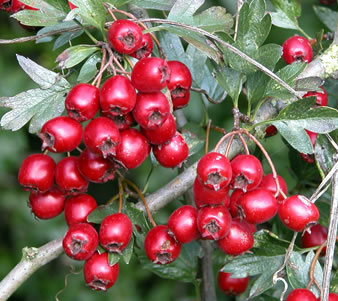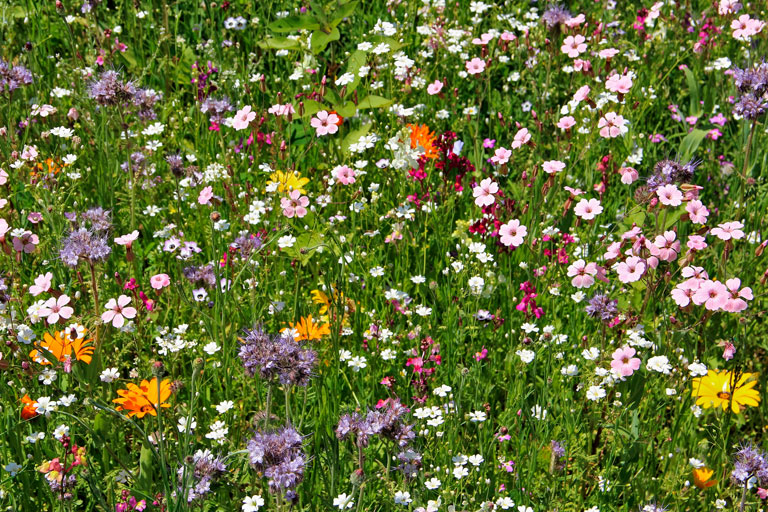Heart Health: How Acupuncture & Herbs Can Help
In the U.S., heart disease remains a leading cause of death and significantly affects quality of life.
As of 2018, 30.3 million U.S. adults were diagnosed with heart disease. Every year, about 647,000 Americans die from heart disease, making it the leading cause of death in the United States. Heart disease causes 1 out of every 4 deaths (Healthline).
The challenge for the typical American remains making significant enough lifestyle changes to eliminate the need for medications and stave off further disease.
So what should you do when faced with the choice between significant lifestyle changes and taking side-effect inducing medications? I have some suggestions on how to take a measured approach to restore your cardiovascular health.
In this article I’ll discuss natural treatment options to help lower blood pressure, increase circulation, and manage high cholesterol levels.
I. Poor Circulation
Our circulatory system is responsible for delivering oxygen and nutrients to every cell in the body. If circulation isn’t working effectively, it can cause cells to perform poorly or die.
Poor circulation is most common in the limbs or outer layers of the skin, but can also happen to internal organs or the muscles of the heart itself. Common circulation issues include tingling sensation or pain in your hands and feet, muscle cramping, and fatigue.
Poor circulation isn’t a health condition on its own — rather a symptom of an underlying illness. Obesity, diabetes, and heart disease can all lead to poor circulation.
Acupuncture & Herbs for Circulation
In my practice I use acupuncture to improve circulation to specific body parts as well as internal organs. Fluoroscopy (Live x-ray) even confirms acupuncture’s ability to do so https://www.ncbi.nlm.nih.gov/pmc/articles/PMC3388479/
Hawthorn

Hawthorn (Crataegus oxycantha) is the premier herb for managing circulation issues.
A group of compounds produced in the leaves and berries of the plant called oligomeric procyanidins offer powerful benefits to the arterial system.
One study found these compounds were able to increase nitric oxide (NO) and inhibit angiotensin-converting enzyme (ACE) [3] — both of which are also targeted by conventional pharmaceutical medications like Vasotec.
Hawthorn has also been shown to increase the contractile force of the heart [4], reduce the severity of heart arrhythmias [5], and provides a powerful array of cardioprotective antioxidants [6].
Ginger
Ginger (Zingiber officinalis) is best known for its use in cooking — but this humble culinary herb offers powerful circulatory benefits as well. It’s one of the most common herbs used in traditional Chinese medicine for stimulating blood flow.
Active ingredients in ginger such as zingiberene have been shown to inhibit angiotensin-converting enzyme (ACE) [7] and increase nitric oxide to help dilate blood vessels [8]. When blood vessels are dilated and blood pressure is reduced, there’s less resistance for blood to flow — making it easier for the heart to move blood around the body.
One study involving over 4600 people found that people who consumed ginger on a daily basis had significantly lower rates of heart disease later in life [9].
II. High Blood Pressure (Hypertension)
The ideal blood pressure is around 120/80 mmHg. High blood pressure (hypertension) is considered anything over 130/90 mmHg. According to the CDC, this condition is very common, affecting roughly half the adult population in the United States.
There are a variety of prescription medications which effectively control hypertension, but some include unwanted side effects related to kidney function and the production of sex hormones.
Here are the most popular alternative treatment options for managing mild-to-moderate hypertension.
Acupuncture & Herbs for Hypertension

In my clinic I use Yang Lao (Small Intestine 6) along with Zu San Li (Stomach 36) as foundational points in my treatments for blood pressure.
Generally speaking, acupuncture will lower blood pressure because of its ability to promote homeostasis.
Specifically, acupuncture will up-regulate the parasympathetic nervous system and down-regulate the sympathetic (fight or flight) nervous system.
Additionally, acupuncture studies have demonstrated the following effects:
- Increased nitric oxide release [1]
- Decreases angiotensin II [2]d
- Key Acupuncture Protocol: Lv 3 and Quchi (LI 11), PC 6 and Jianshi (PC 5), and ST 36 and LI 11
Garlic

Garlic (Allium sativum) is one of the best herbs for managing high blood pressure — period.
There are several active ingredients in garlic that help reduce blood pressure, but the primary active ingredient and the most well-studied component is a sulfur-based compound known as allicin.
Studies have repeatedly shown that allicin helps the blood vessels relax by increasing the release of hydrogen sulfide (H2S) and nitric oxide (NO) [10] — both of which are key chemical messengers responsible for dilating blood vessels.
Another study found garlic was as effective for managing high blood pressure as a popular pharmaceutical antihypertensive medication called Atenolol [11].
If you want to avoid taking a garlic supplement, considering eating at least one raw clove of garlic daily. Cooking garlic inactivates much of wanted allicin-related benefits.
III. High Cholesterol & Blood Lipids (Hyperlipidemia)
The body requires both water-soluble and fat-soluble compounds to function properly. Many of our hormones, for example, are made from cholesterol and other fatty substances. We also use lipids as a source of energy to power our cells and need a steady supply to build the fatty portion of cell walls.
Fat and water don’t mix. So we need special proteins to help dissolve fatty substances into the water-based blood.
Too much fat in our blood (hyperlipidemia) can lead to serious long-term health issues. It can cause a buildup of plaque around the arteries that may lead to a heart attack or stroke later in life.
The main blood lipids that become an issue is cholesterol. There are two types of cholesterol to be aware of:
- LDL Cholesterol — a type of cholesterol that may increase the buildup of plaque around the arteries
- HDL Cholesterol — a type of cholesterol that may reduce the buildup of plaque around the arteries
There’s a lot more to it than that, but the general idea is to reduce LDL cholesterol and increase HDL cholesterol.
Luckily, there are a few excellent herbs available that can help get this job done effectively.
Acupuncture & Herbs for Hyperlipidemia
Acupuncture was shown to reduce cholesterol levels in rabbits by stimulating nerve fibers in the spinal cord and abdomen [14]. One study found that damage to the peripheral nerves leads to an increase in cholesterol levels [15].
Turmeric

The active ingredient in turmeric is a compound called curcumin. It’s been studied in-depth for its ability to regulate blood pressure, fight inflammation, and reduce cholesterol and other blood lipids.
Studies have shown that curcumin works through similar mechanisms as prescription cholesterol medications (statin drugs). One such study found curcumin was able to reduce the absorption of cholesterol in the gastrointestinal tract, stimulate the excretion of cholesterol from the liver, and remove cholesterol plaque from the arterial walls [12].
Turmeric also provides a powerful array of antioxidants that have been shown to protect the arteries and heart muscle from hardening (atherosclerosis) [13].
Final Thoughts: Herbs & Acupuncture For Heart Health
Heart disease is no joke. It’s been the leading killer in the United States for several decades now and doesn’t appear to be slowing down any time soon.
Taking care of your heart requires attention in several areas of your life — from the food you eat to the amount of time you spend exercising and relaxing. Factors like alcohol and cigarettes, processed foods, and stress can all impact blood circulation, blood pressure, and cholesterol levels.
While there are clear benefits to using herbs like garlic, turmeric, hawthorn, ginger, or other techniques such as acupuncture — prevention is still the best treatment.
Eating a well-balanced diet rich in fruits and vegetables (more vegetables than fruit), avoiding excess sugar, preservatives, and paying attention to food volume (how much you eat at a time) can all positively impact your health. I’m not a nutritionist, but I’ve spent the last twenty years working on my own diet and helping patients make small changes that lead to big effects later on.
Exercising regularly, at least 150 min/week, is a foundational piece to both cardiovascular and emotional health. The body does not like stagnation and strong muscles not only burn more calories, but also prevent injury and support the circulatory system.
If you have questions about which herbs are right for you or how acupuncture can benefit your cardiovascular health, please contact me. I hope you found this information useful.
For more Info:
Always consult with a health practitioner before attempting to treat cardiovascular disease yourself.
References Cited In This Article
- F. Huang, G.-X. Yao, X.-L. Huang, and Y.-N. Liu, “Clinical observation on acupuncture for the treatment of hypertension of phlegm-stasis blocking collateral type,” Chinese Acupuncture & Moxibustion, vol. 27, no. 6, pp. 403–406, 2007.
- Leung, S. B., Zhang, H., Lau, C. W., & Lin, Z. X. (2016). Attenuation of blood pressure in spontaneously hypertensive rats by acupuncture was associated with reduction of oxidative stress and improvement from endothelial dysfunction. Chinese medicine, 11(1), 1-18.
- Kim, S. H., Kang, K. W., Kim, K. W., & Kim, N. D. (2000). Procyanidins in crataegus extract evoke endothelium-dependent vasorelaxation in rat aorta. Life Sciences, 67(2), 121-131.
- Petkov, E., Nikolov, N., & Uzunov, P. (1981). Inhibitory effect of some flavonoids and flavonoid mixtures on cyclic AMP phosphodiesterase activity of rat heart. Planta Medica, 43(10), 183-186.
- Pöpping, S., Rose, H., Ionescu, I., Fischer, Y., & Kammermeier, H. (1995). Effect of a hawthorn extract on contraction and energy turnover of isolated rat cardiomyocytes. Arzneimittel-forschung, 45(11), 1157-1161.
- Zhang, Z., Chang, Q., Zhu, M., Huang, Y., Ho, W. K., & Chen, Z. Y. (2001). Characterization of antioxidants present in hawthorn fruits. The Journal of nutritional biochemistry, 12(3), 144-152.
- Akinyemi, A. J., Ademiluyi, A. O., & Oboh, G. (2014). Inhibition of angiotensin-1-converting enzyme activity by two varieties of ginger (Zingiber officinale) in rats fed a high cholesterol diet. Journal of medicinal food, 17(3), 317-323.
- Shimoda, H., Shan, S. J., Tanaka, J., Seki, A., Seo, J. W., Kasajima, N., … & Murakami, N. (2010). Anti-inflammatory properties of red ginger (Zingiber officinale var. Rubra) extract and suppression of nitric oxide production by its constituents. Journal of medicinal food, 13(1), 156-162.
- Wang, Y., Yu, H., Zhang, X., Feng, Q., Guo, X., Li, S., … & Ma, Y. (2017). Evaluation of daily ginger consumption for the prevention of chronic diseases in adults: A cross-sectional study. Nutrition, 36, 79-84.
- Ried, K., & Fakler, P. (2014). Potential of garlic (Allium sativum) in lowering high blood pressure: mechanisms of action and clinical relevance. Integrated blood pressure control, 7, 71.
- Ashraf, R., Khan, R. A., Ashraf, I., & Qureshi, A. A. (2013). Effects of Allium sativum (garlic) on systolic and diastolic blood pressure in patients with essential hypertension. Pakistan Journal of pharmaceutical sciences, 26(5).
- Panahi, Y., Ahmadi, Y., Teymouri, M., Johnston, T. P., & Sahebkar, A. (2018). Curcumin as a potential candidate for treating hyperlipidemia: a review of cellular and metabolic mechanisms. Journal of cellular physiology, 233(1), 141-152.
- Bosca, A. R., Gutierrez, M. C., Soler, A., Puerta, C., Diez, A., Quintanilla, E., … & Miquel, J. (1997). Effects of the antioxidant turmeric on lipoprotein peroxides: implications for the prevention of atherosclerosis. Age, 20(3), 165-168.
- Wu, C. C., & Hsu, C. J. (1979). Neurogenic regulation of lipid metabolism in the rabbit—A mechanism for the cholesterol-lowering effect of acupuncture. Atherosclerosis, 33(2), 153-164.







